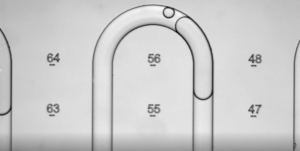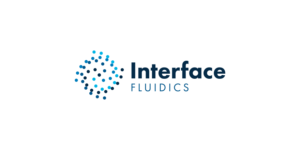Recently, Interface Fluidics announced the release of SapphireLab, a revolutionary product in its class. SapphireLab brings together the three core technologies that we have been developing over the past six years into one product: microfluidic chip design, mechanical design, and software.
The design of high-pressure, high-temperature fluid systems has been my passion since I flooded a portion of my elementary school gym demonstrating the Hagen–Poiseuille equation. I’ve learned a bit more over the years and bringing microfluidic technology from a university lab to industrial application is hard, but we’ve done it.
Note: If the video above does not play, please visit:
https://www.youtube.com/watch?v=tBhP0p3aAPU
Today I am excited to share with you the underlying design philosophy that was used to develop the SappireLab testing platform. Since Stuart Kinnear, Dave Sinton, and I started Interface in 2015, we’ve striven to build microfluidic systems that increase the accessibility of fluid tests that have traditionally been expensive and time consuming.
Setting out to provide innovation for the existing market, there were three goals in mind: technology that was small, fast and flexible.
Small
Microfluidic chips can range in size from small to smaller, but the equipment around it can take up a lot of space. The more required temperature and pressure control, the larger the hardware gets. Interface packs its technology into a package that is smaller than a conventional PVT cell, slim-tube apparatus, or core-flood setup. The biggest space savings comes by packing the capabilities of multiple tools into one package.
In addition to the miniaturized equipment, we also aim to use much more modest sample sizes. The sample on the microfluidic chip is usually a tiny fraction of the fluid required to fill lines, valves, and fittings on a traditional testing device.
This required a lot of clever engineering was needed to cut out dead-volume (AKA the fluid volume that does not play an active role in making the measurement). Interface aims to use 1% of the sample used in a conventional test. For example, our MMP measurements require only 1 ml compared to a full liter, which is the current industry standard.
Fast
Data is driving decisions in every part of our lives, but traditional testing methods can take months to deliver data and delay expensive decision-making. Fast data is a competitive advantage to our customers. But why is a microfluidic system faster than a testing system with higher volume?
Confining fluid in a micro or nanochannel creates a very high surface area to volume ratio. Large systems with gas and liquid will take a long time to reach equilibrium. However, when the study volume is reduced to one one-millionth (1 µl vs 1 liter) components have a lot less distance to travel and diffusion allows for rapid equilibrium between phases.
Interface has spent years developing commercialized microfluidic systems. Creating methods that work with the range of properties found in real reservoir fluids takes significantly longer than developing systems for use with simple model fluids. When proving a new chip design in an academic setting, fluids are chosen to behave in a desired fashion in a pressure and temperature range suitable for the equipment used.
In a commercial setting, equipment must be tolerant of a much larger pressure and temperature envelope as well as tolerant of fluid particulate, solids coming out of solution, surface active compounds, and numerous other quirks that come with fluid samples from underground.
We’re making the process of capturing, storing, and analyzing data simple and quick. Each test uses a different chip inserted into one common piece of hardware. Our software provides a data pipeline to get to a final result without using spreadsheets or multiple software programs from different providers.
The speed that testing can be done with our platform will disrupt the energy laboratory market. Operators will be able to make critical decisions faster, decreasing the time from gathering samples to generating revenue from an asset. Laboratory providers will be able to have the advantage of delivering their customers data faster than their competitors. Chemical companies will also be able to rapidly iterate chemical blends until an optimal solution is found.
Flexible
Since we start Interface, the pace of change in the energy industry has been intense. And right now, each new test can require a new piece of hardware to be purchased. With SapphireLab, changing out the chip and software package is all that you need to do in order to run new tests on our hardware. Each new test is like adding an app to your cell phone. By 2023, Interface’s hardware platform will be able to run numerous tests – all with the same hardware.
While working to develop the physical hardware, we understood that software on the market wouldn’t be able to meet the needs of our customers. That’s why we developed a way to automate the testing for increased flexibility. We have refined our software through years by testing and using it for our internal operations.
We call the software Autobench, and it’s been designed to provide stable, automated, control of hardware for a multitude of microfluidic tests. Routine image analysis tasks are assembled into a set of steps and users are provided with an automated series of steps for analyzing data generated by imaging.
Forward
Looking back, I’m sure none of us Interface co-founders knew where the energy industry was headed when we began our work in 2016. Over the years of research, development, trial and error, we’ve provided countless clients with the information they need to make better, faster decisions in their oilfield operations.
There’s still a long road ahead of us as we work to become the category leader in high-pressure, high-temperature fluid analysis. A lot will change, but we will continue to guide our development by keeping to the concepts of fast testing, flexible design, and small equipment/fluid volume at the forefront of our work.




